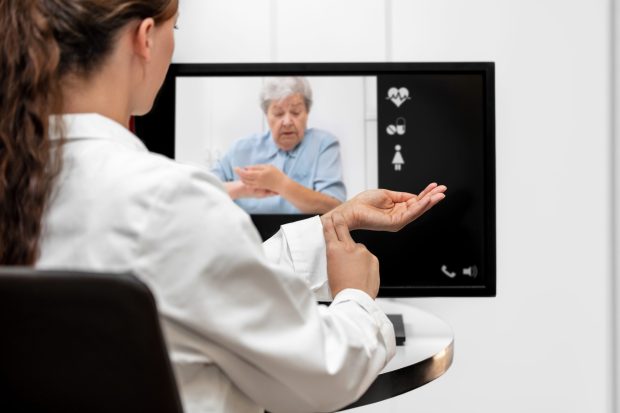PYMNTS Intelligence: How Telemedicine Is Driving Digital Identity Verification Adoption in Healthcare

![]() The pandemic prompted a quick, widespread digital transformation in the healthcare space, characterized by virtual care becoming the norm for routine medical appointments. A recent survey found that 56% of hospital and health system leaders plan to increase telemedicine investments over the next two years, suggesting that the sector’s decision-makers expect these shifts to last.
The pandemic prompted a quick, widespread digital transformation in the healthcare space, characterized by virtual care becoming the norm for routine medical appointments. A recent survey found that 56% of hospital and health system leaders plan to increase telemedicine investments over the next two years, suggesting that the sector’s decision-makers expect these shifts to last.
Healthcare organizations that embrace telehealth must also be prepared to institute strict authentication rules and procedures to enable strong identity verification. Remote user ID verification in healthcare poses unique challenges, as the nature of healthcare significantly increases the potential for serious consequences, including medical errors, patient privacy violations and cybersecurity risks. Virtual healthcare is an appealing target for hackers because it offers a trove of vulnerable data, with services typically taking place directly on patients’ personal devices. Recent research found that healthcare security risks to both providers and patients are on the rise, making the widespread adoption of digital identity verification in the healthcare industry an urgent matter.
This month, PYMNTS examines how remote care is increasing the need for digital identity verification measures in healthcare services. We also explore solutions that can address the specific challenges to implementing these measures in a virtual care setting.
The Rising Need for Digital Identity Verification in Healthcare
A recent survey highlighted the growing cybersecurity risks confronting healthcare providers and their patients, revealing that 85% of organizations have witnessed increased risks over the past 12 months, with 58% of IT professionals saying ransomware has hit their organizations. One-third of potential patients also reported having been victims of healthcare cybersecurity attacks. With 430 million connected medical devices in use worldwide, potential healthcare-related targets are at an all-time high, and numbers continue to rise.
Despite these risks, the convenience of smartphone access, in particular, appears to be a powerful draw for many healthcare consumers. A survey from the Pew Charitable Trust found that 61% of Americans want to access their health data via mobile devices, with this interest especially popular among millennials, at 67%.
Patient Passports: The Benefits of a Decentralized Approach
Given the constraints of virtual care and consumers’ interest in mobile access, a decentralized approach to identity verification in healthcare seems to be the most natural solution. Smartphone-based digital identity tools allow consumers to take charge of their own identity management, authenticate themselves securely and provide informed consent when sharing data among multiple providers. These solutions enable consumers to perform everything from connecting with their doctors and sharing insurance information to accessing healthcare records and paying medical bills.
Decentralized identity verification requires patients to download specific digital wallets — sometimes called patient passports — that securely verify their credentials for swift and contactless access to care. Following initial verification using photo IDs, patient passports offer future access via one click and provide many benefits, including proof of identity and reduction of data breach risks, as patients’ personally identifiable information is never stored or copied with this decentralized model. The passports also offer the option of adding a biometric layer to the authentication process to boost security even further.
Patient passports offer one way to streamline the verification process and ensure that patients have access to digital care when and where they need it. These tools could soon be healthcare organizations’ solution of choice in providing frictionless and secure virtual care to the right patients at the right time.
